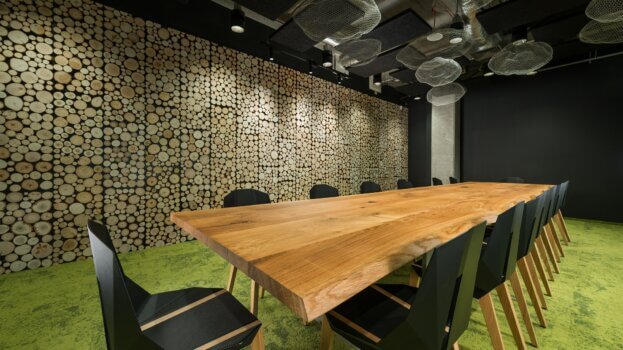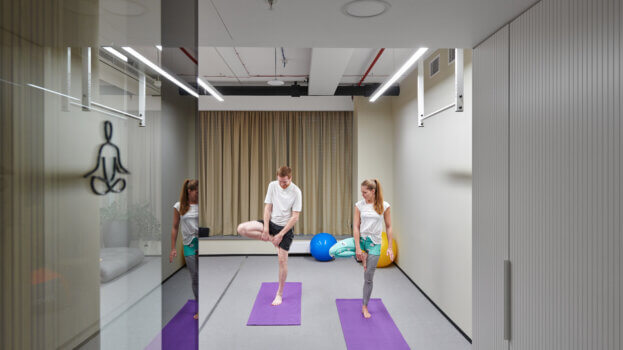Creating a Positive and Productive Work Environment Through Lighting Design
When designing, planning, and fitting out offices, one of the most common questions we receive is “What is the best way to implement a lighting design?” Our workspace consultants usually give the simplest answer: with as few lights as possible. This is not just because we want to be sustainable (though it is certainly a happy coincidence), but because we strive to bring as much natural light into the areas where our clients work. While artificial light is essential for central interiors and during grey days and late nights, natural light is not just a “nice to have.”
Properly implemented lighting design improves well-being: natural light boosts mood and interpersonal relationships. The more positive you feel at work, the better you will be at collaborating and the greater your job satisfaction. In fact, a study by Cornell University found that nurses with regular access to daylight exhibited better moods, laughed more, and were nicer to their patients. They also communicated more effectively with their colleagues and enjoyed physiological benefits.
Maximising Natural Lighting Design: Tips for Choosing the Right Building
So, what is the key to a good workspace lighting design strategy? Here are five tips to ensure that the light in your office works:
1. Choose the right building
Look for an office building that has been designed with light in mind. It should maximise the potential of local constraints and geography, with windows that let in as much natural light as possible and a floor plan that puts as much usable office space in well-lit areas.
Beyond that, focus on other well-being features, such as good views.
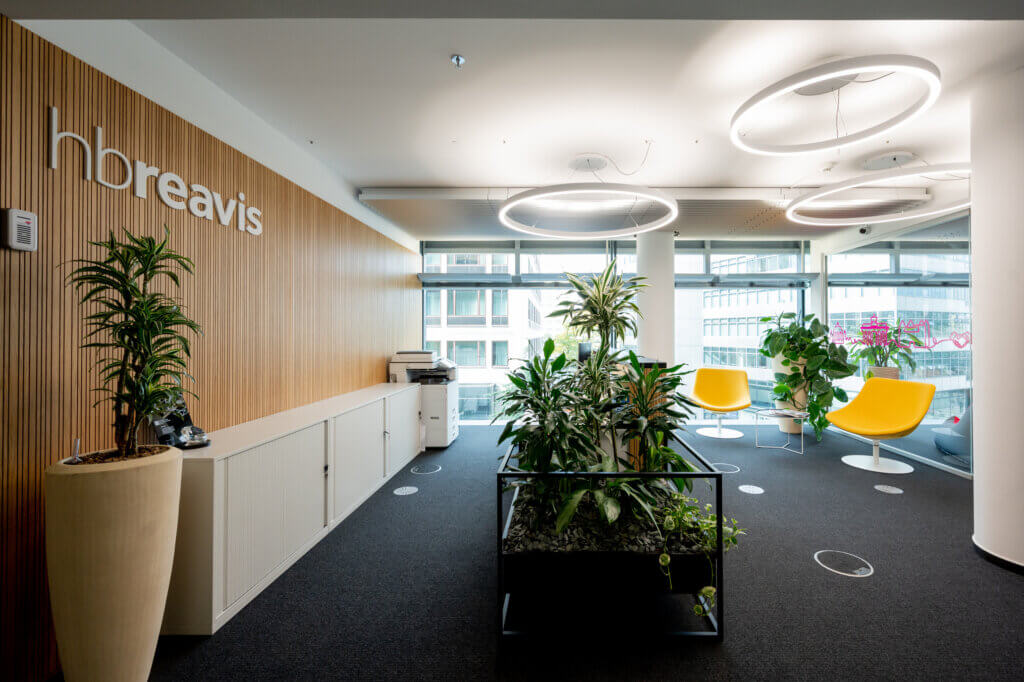
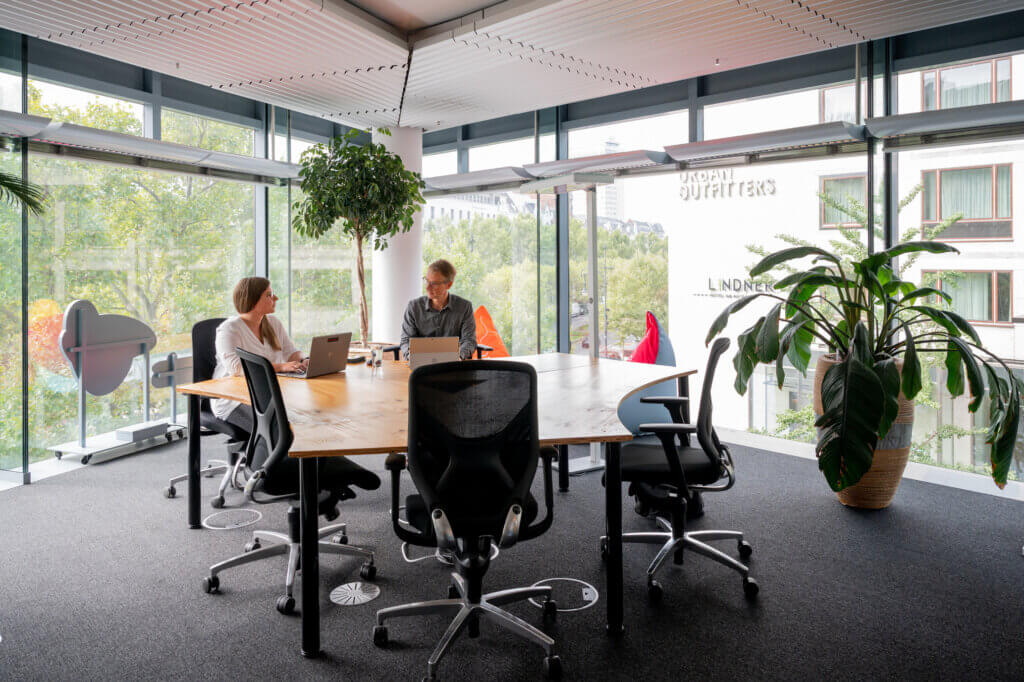
2. Use shading
Excessive sunlight can cause glare and uncomfortable visual contrasts. Blinds, curtains or light-filtering technology are therefore vital.
However, ensure they are used properly and do not shade workspaces when it’s dark or murky outside, as this can make the office gloomy and less effective.
3. Avoid glare
Strong sun or artificial light and its reflections can cause visual discomfort, fatigue, impairment and even injury.
Good lighting design goes beyond windows, bulbs and shading to include interior materials that dampen bright lights, improve the workspace ambiance and increase worker satisfaction.
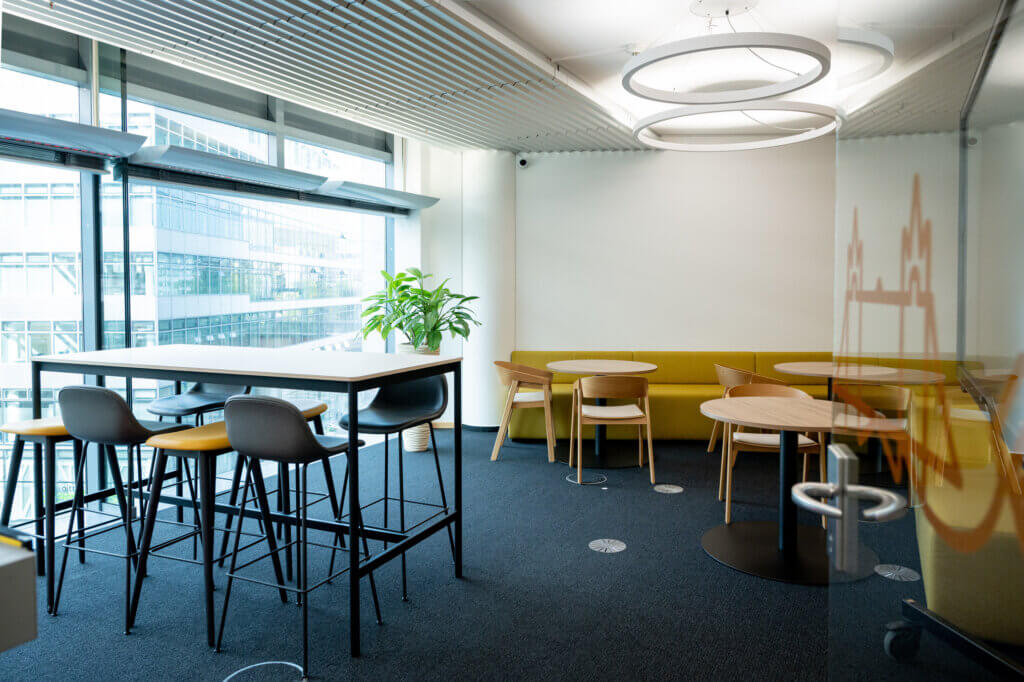
Investing in a Bright Future: The Long-Term Benefits of Effective Lighting Design
Effective lighting design is essential for office design and fit outs. It can create a positive and effective environment for employees, improving productivity, wellbeing and job satisfaction. To ensure the best lighting design for your office, consider choosing the right building, using shading appropriately, avoiding glare, consulting an artificial lighting specialist and maintaining your lights regularly. Investing in a well-thought-out lighting design can also have long-term benefits for your company by increasing employee satisfaction and productivity.
Ready to transform your workspace? Our services range from analytics to fit-out management. See what we can do for you.
